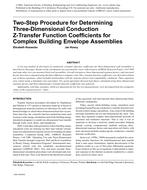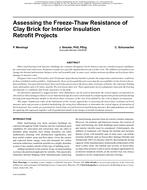States that multifamily buildings larger than 40 units commonly have a pump on the domestic hot water system that constantly circulates heated water through a piping loop. Such a system ensures continuous delivery of hot water, but high piping losses decrease overall efficiency. Describes how, to investigate the strategy of reducing system temperatures during periods of low demand, time-based and demand-based temperature controls were installed in three apartment buildings. The purpose was to assess savings potential, operation and tenant acceptability. Tests were conducted using an alternating mode design monitored by a computerised data acquisition system. States that this control strategy is worthwhile even in a relatively small building, this control strategy is worthwhile. Energy savings averaged 10.3% of domestic hot water heating for the time control and 16.2% for the demand control, with simply paybacks of 2.2 and 1.9 years respectively. The demand control was easier to operate and appears less likely to be overridden.
KEYWORDS: Flats, USA, controls, domestic, hot water supply, controls, temperature, experiment, energy conservation, testing
Citation: ASHRAE Trans. 1992, vol.98, part 1, paper number AN-92-2-3, 676-689, 4 figs, 7 tabs, refs.
Product Details
- Published:
- 1992
- File Size:
- 1 file , 1.6 MB
- Product Code(s):
- D-17920


